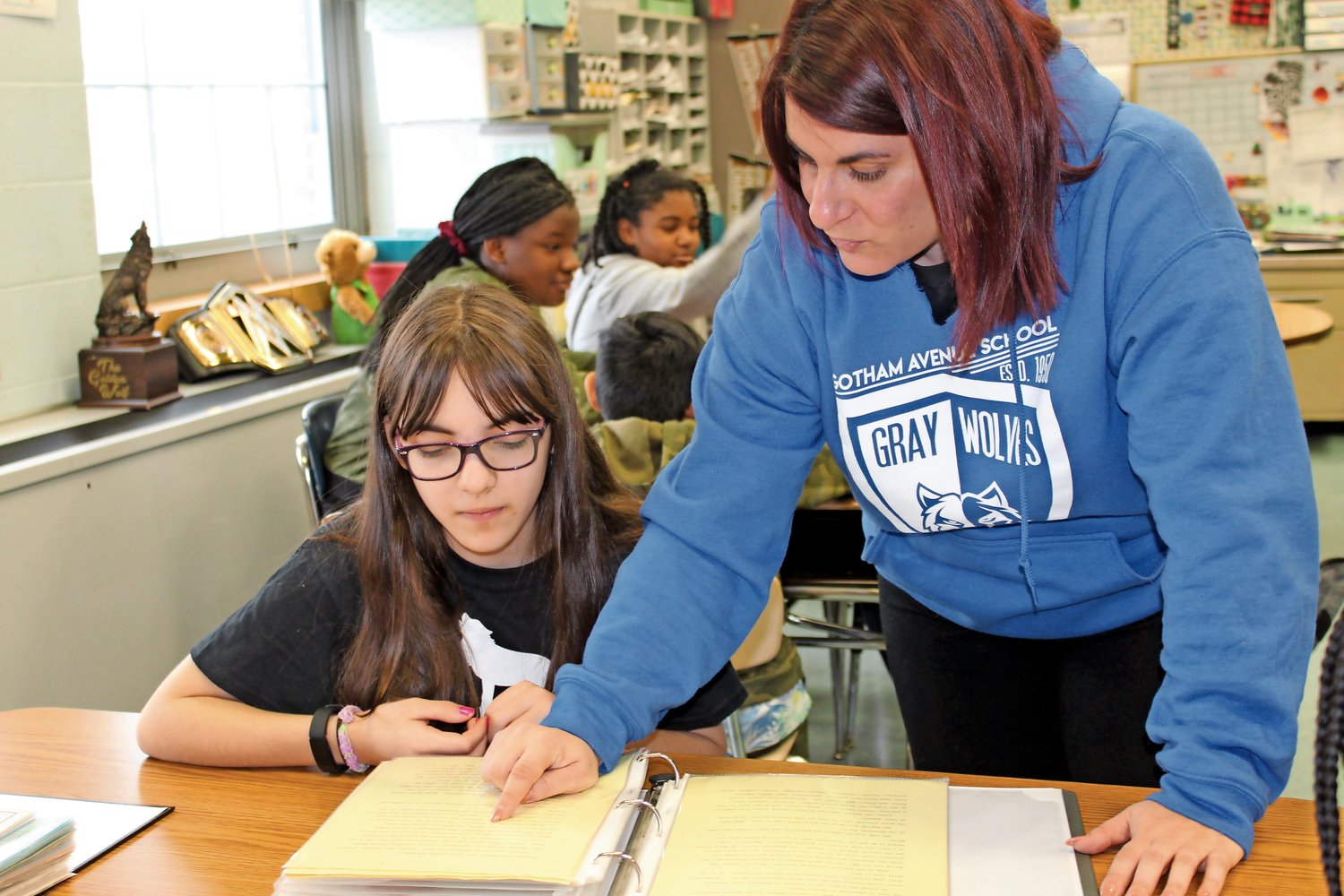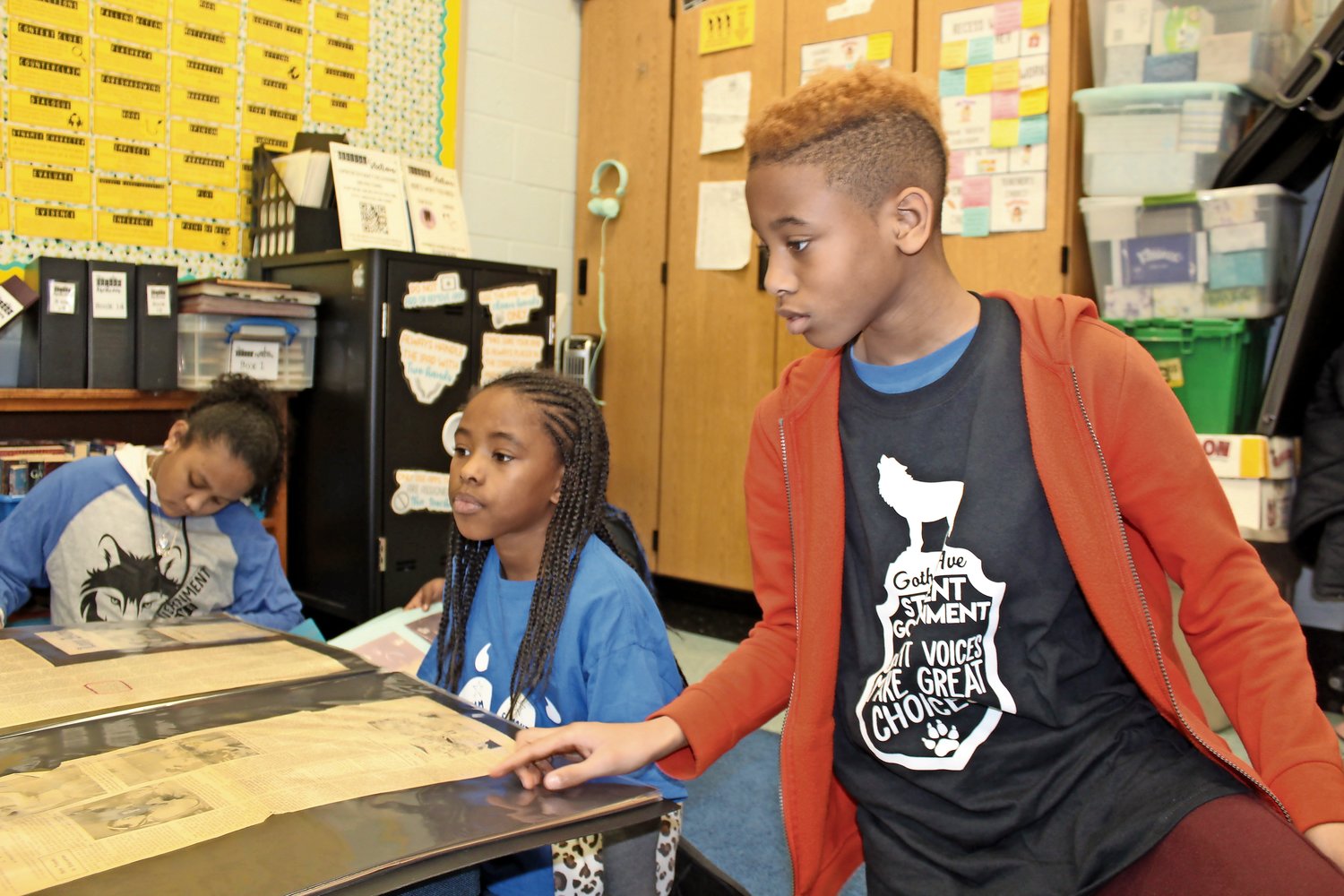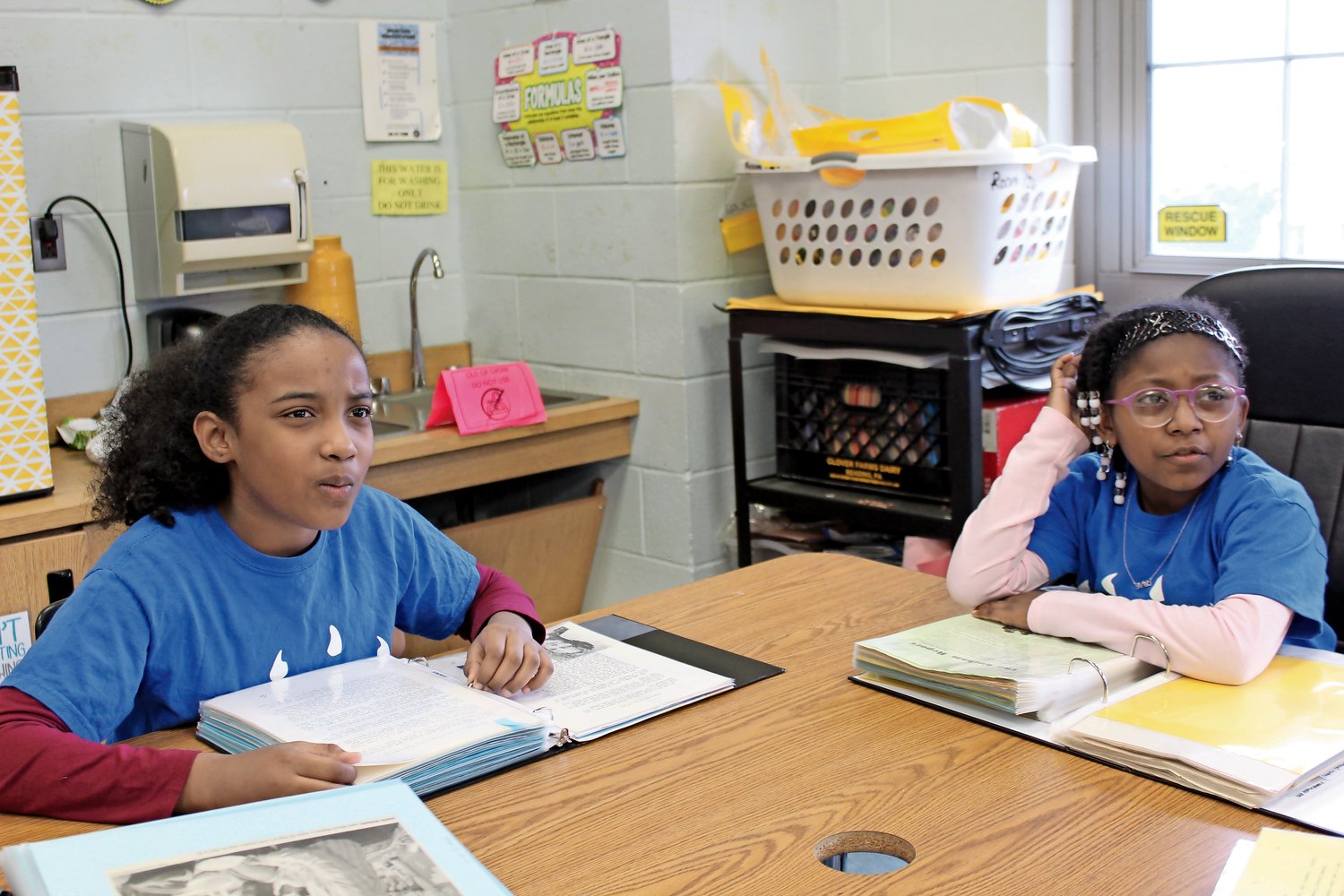Gotham Student Government archives history
There is a time capsule from 1950 hidden somewhere in the Gotham Avenue School.
Students in Mr. Salem’s class at the time — the first year the school was operational — each contributed something. Then Salem unscrewed a vent and stuck it inside, where it still rests to this day.
“We felt that one day, like all buildings, it will be torn down,” Salem wrote to Gotham Avenue students in 1999, for the school’s 50th anniversary celebration, “and when they do, they’ll find a galvanized metal box painted bright red.”
This story and hundreds of others are now documented in the Gotham Archives, which Student Government Advisor Lindsey Bascetta spent the past four years assembling from Principal Marshall Zucker’s old files on the district.
Zucker started working in the district in 1975, and has worked with teachers who started in the 1940s and is now working with teachers who will hopefully remain in the district until the 2060s. As a result, he said, he has amassed “years and years of files,” including old newspaper articles about the origins of the Elmont Union Free School District, old class lists, old newsletters, photos from various events over the years and student work.
“I have a natural interest in history,” Zucker, who is retiring at the end of the year, explained, “and I’m willing to share that interest with anyone.”
But the documents he stored in his office were not well-organized until Bascetta, who teaches sixth-grade at the school, took over the Student Government more than four years ago. She decided to collect Zucker’s various documents, and work with the 32 Student Government fourth- through sixth-graders to form an archive.
When they began their efforts, she said, they had 12 paper-sized boxes filled with documents in varying condition. “There was no organization to it,” Bascetta recounted. “It was just a huge compilation of things.”
To resolve that, Bascetta and the students preserved which clippings they could and separated them into 15 separate binders based on subject area and chronology. The students would then cut out the articles and paste them in the appropriate binder.
“It became a well-oiled machine,” Bascetta recounted.
During the process, she noted, she and the students also learned about Elmont’s history, which they were able to contextualize in the larger movements of the time periods, including that:
Elmont may have been named after “the rolling hills of El Monte” in “Don Quijote”
The entire area was once covered by lilies of the valley
Flags were first installed in every classroom in the 1960s
The gymnasium is named after a former physical education teacher, who appeared on television in the 1970s and taught children how to square dance
Girls were not allowed to wear shorts, jeans or cowboy boots to school in the 1950s, but then, sixth-grader Elissa Acheamong said, “people stood up for women.”
“I think it’s really cool how we can find out more about the school’s past,” said Tania Trent, a fifth-grader in the Student Government, adding, “It’s cool to see so many teachers who still work here.”
Eventually, these students’ work will also be preserved in the archives, Bascetta told them on March 6. “It will be interesting in 20 years when students are adding to it,” she said, joking that future students would be just as appalled by their iPads as the current students were by a photo of a computer from the 1980s.
“Gotham has a history,” she taught the children, “but not everything that happens in the past stays in the past.”
To further preserve that history, Bascetta said, she would like to have some of the teachers who have been at the school for many years identify former students, and to digitize the archives that are currently housed on a bookshelf in her classroom, saying, “It’s even nicer when we get to share it.”
Zucker agreed, and said he is “very happy” that his old files “have been handled in the way it’s been handled,” noting, “I didn’t want them to go to waste.”













